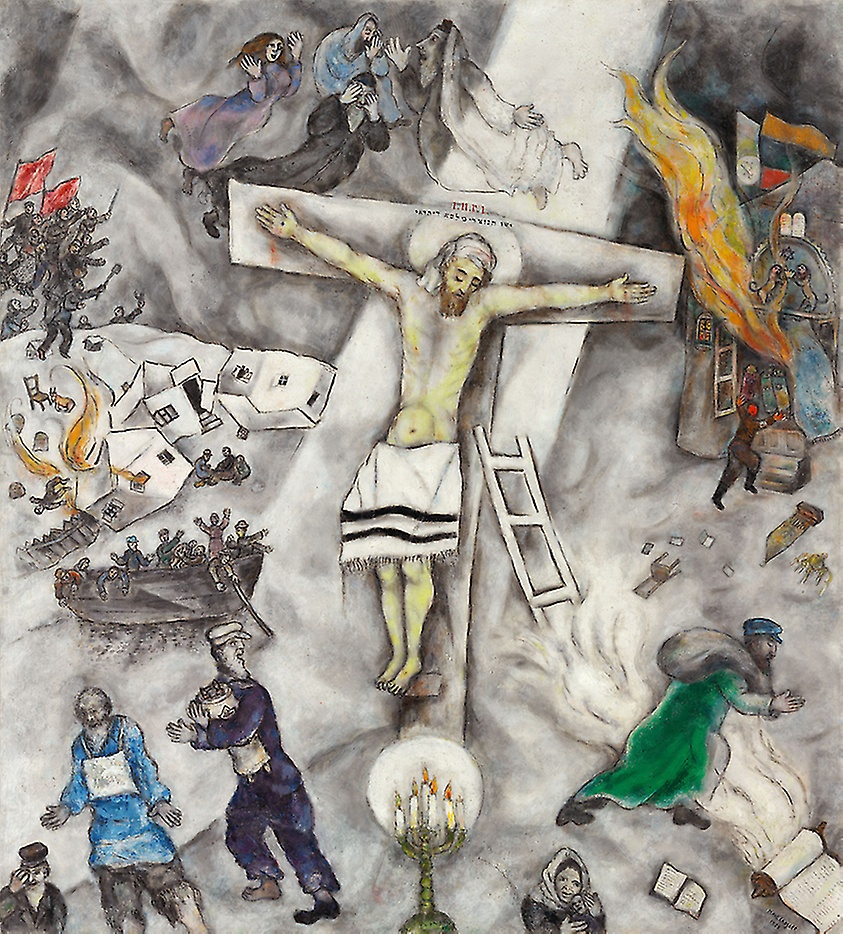The word from the cross is the gospel of Paul – the message he announced to Jews and pagans. It is a plain witness, without a trace of grandiloquence, without any effort to convince on the grounds of reason. It derives its entire force from that which it proclaims. And that is the cross of Christ, that is, the death of Christ on the cross, and the crucified Christ himself.
Christ is God’s power and God’s wisdom not only as one sent by God, as God’s Son who is himself God, but as the Crucified One. For the death on the cross is the salvific solution invented by God’s unfathomable wisdom. In order to show that human power and human wisdom are incapable of achieving salvation, he gives salvific power to what appears to human estimation to be weak and foolish, to him who wishes to be nothing on his own, but allows the power of God alone to work in him, who has “emptied himself” and “become obedient to death on the cross.”
The saving power: this is the power that awakens to life those in whom divine life had died through sin. This saving power had entered the Word from the cross and through this word passes over into all who receive it, who open themselves to it, without demanding miraculous signs or human wisdom’s reasons. In them it becomes the life-giving and life-forming power that we have named the science of the cross.
Paul brought it to fulfillment in himself: “Through the law, I died to the law, that I might live to God. I have been crucified with Christ; it is no longer I who live but Christ who lives in me; and the life that I now live in the flesh I live by faith in the Son of God who loved me and gave himself for me.”
In those days when all turned into night about him but light filled his soul, the zealot for the Law realized that the Law was but the tutor on the way to Christ. It could prepare one to receive life, but of itself it could not give life. Christ took the yoke of the Law upon himself in that he fulfilled it perfectly and died for and through the Law.
Just so did he free from the Law those who wished to receive life from him. But they can receive it only if they relinquish their own life. For those who are baptized in Christ are baptized in his death. They are submerged in his life in order to become members of his body and as such to suffer and to die with him but also to arise with him to eternal, divine life.

This life will be ours in its fullness only on the day of glory. But even now we have – “in the flesh”- a share therein insofar as we believe: believe that Christ died for us in order to give us life.
It is this faith that unites us to him as the members are joined to the head and opens for us the stream of his life. And so faith in the Crucified – a living faith joined to loving surrender – is for us entrance into life and the beginning of future glory.
The cross, therefore, is our only claim to glory: “Far be it from me to glory except in the cross of our Lord Jesus Christ, by which the world has been crucified to me, and I to the world.” He who has decided for Christ is dead to the world and the world to him. He carries in his body the marks of the Lord’s wounds, is weak and despised by the people but is precisely therefore strong because the power of God is mighty in the weak.
Knowing this, Jesus’ disciple not only takes up the cross that is laid upon him, but also crucifies himself: “Those who belong to Christ Jesus have crucified the flesh with its passions and desires.” They have waged an unrelenting battle against their nature, that the life of sin might die in them and room be made for the life of the spirit.
That last is what is important. The cross has no purpose of itself. It rises on high and points above. But it is not merely a sign – it is Christ’s powerful weapon; the shepherd’s staff with which the divine David moves against the hellish Goliath; with it he strikes mightily against heaven’s gate and throws it wide open. Then streams of divine light flow forth and enfold all who are followers of the Crucified. – From The Science of the Cross
*Image: White Crucifixion by Marc Chagall, 1938 [Art Institute of Chicago]















